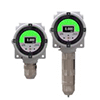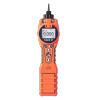
The European Commission have announced a proposal to introduce their first-ever workplace exposure limit for Dissocyanates.
Diisocyanates describe various chemicals that are often grouped based on their common properties, and which can cause respiratory diseases like asthma. The Commission’s impact assessment estimates that currently, 4.2 million workers in the EU are exposed to diisocyanates.
A diisocyanate is a compound which contains two isocyanate groups (R-N=C=O), they are organic compounds which can be aromatic or aliphatic in nature.
Diisocyanates are widely used across a number of industries, from construction and automotive to sports and footwear, diisocyanates are a versatile range of compounds. They make rigid and flexible foams, coatings, adhesives, sealants, varnishes, paints and elastomers.
Diagram of Diisocyanates:

The Commission has released two-time limits for diisoyanates:
- The overall occupational exposure limit of 6µg NCO/m3 (8-hour period)
- The short-term exposure limit of 12µg NCO/m3 (15-minute period)
Further to this the Commission has also included notations, where there are limit values which alert employers and workers. To ensure worker’s safety, accurate, real-time monitoring of diisocyanate in the air is vital. ION Science’s PID technology is capable of accurately detecting VOC’s including diisocyanates such as toluene diisocyanate (TDI) and hexamethylene diisocyanate (HDI).
Suitable Products ION Science offer:
Falco Detector: Offering the ultimate in safety, Falco eliminates false readings found with other competing PID technology. Its multi-coloured LED status display can be seen from a distance of twenty metres in sunlight ensuring you are clearly alerted to hazards present.

Cub 10.6 eV: The personal VOC gas detector is available as a standard instrument with a 10.6 eV lamp for accurately detecting a wide range of volatile organic compounds (VOCs) to parts-per-million (ppm) levels.

Tiger XT Range: It can detect gases at levels as low as 0.001 parts per million (ppm), and can detect up to 20,000 ppm, giving it the broadest measurement range of any VOC detector on the global market today.

MiniPID 2 Range: The sensor is designed for both diffusive and in-line pumped sampling, delivering an exceptional response time and clear down. MiniPID 2 incorporates lamps of exceptional brightness and stability enabling the detection of less volatile and less readily sensed compounds reliably, over an extended period of time.

Next Steps:
The European Commission have mentioned that this proposal will be discussed by the European Parliament and the Council. If confirmed, Member States will have just two years to transpose the Directive into national law.






 United Kingdom
United Kingdom






